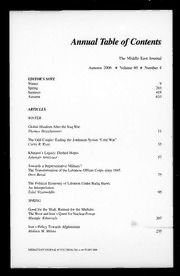
Preview Domino Tilings of the Torus
Fillipo de Souza Lima Impellizieri 6 1 0 2 n a J Domino Tilings of the Torus 4 2 ] O C . h t a m [ 1 v Dissertac¸˜ao de Mestrado 4 5 3 6 0 Dissertation presented to the Programa de Po´s-Gradua¸c˜ao em . 1 Matem´atica of the Departamento de Matem´atica, PUC-Rio as 0 partial fulfillment of the requirements for the degree of Mestre 6 1 em Matem´atica. : v i X Advisor: Prof. Nicolau Corc¸˜ao Saldanha r a Rio de Janeiro September 2015 Fillipo de Souza Lima Impellizieri Domino Tilings of the Torus Dissertation presented to the Programa de Po´s-Gradua¸c˜ao em Matem´atica of the Departamento de Matem´atica do Centro T´ecnico Cient´ıfico da PUC-Rio, as partial fulfillment of the requirements for the degree of Mestre. Prof. Nicolau Corc¸˜ao Saldanha Advisor Departamento de Matem´atica – PUC-Rio Prof. Carlos Tomei Departamento de Matem´atica – PUC-Rio Prof. Juliana Abrantes Freire Departamento de Matem´atica – PUC-Rio Prof. Marcio da Silva Passos Telles Instituto de Matem´atica e Estat´ıstica – UERJ Prof. Robert David Morris Instituto de Matem´atica Pura e Aplicada – IMPA Prof. Jos´e Eugenio Leal Coordinator of the Centro T´ecnico Cient´ıfico – PUC-Rio Rio de Janeiro, September 11th, 2015 All rights reserved Fillipo de Souza Lima Impellizieri The author obtained the degree of Bacharel em Matema´tica from PUC-Rio in July 2013 Bibliographic data Impellizieri, Fillipo de Souza Lima Domino Tilings of the Torus / Fillipo de Souza Lima Impellizieri ; advisor: Nicolau Cor¸c˜ao Saldanha. — 2015. 146 f. : il. ; 30 cm Disserta¸c˜ao (Mestrado em Matem´atica)-Pontif´ıcia Uni- versidade Cat´olica do Rio de Janeiro, Rio de Janeiro, 2015. Inclui bibliografia 1. Matem´atica – Teses. 2. domino. 3. tiling. 4. torus. 5. lattice. 6. flux. 7. flip. 8. height function. 9. Kasteleyn mat- rix. I. Saldanha, Nicolau Cor¸c˜ao. II. Pontif´ıcia Universidade Cato´lica do Rio de Janeiro. Departamento de Matem´atica. III. T´ıtulo. CDD: 510 Acknowledgments To CNPq, FAPERJ and PUC-Rio, for making this research possible. To my advisor, Prof. Nicolau Corc¸˜ao Saldanha, for his boundless pa- tience, eagerness to help and valuable insight. To the Department of Mathematics, especially Creuza, Fred and Renata, for helping me get here and putting up with my fickleness. To my jury, for their appreciation, understanding and precious feedback. In particular, I would like to thank Carlos Tomei for his spirit and enthusiasm, and Marcio Telles for his dedication. To my professor Ricardo Earp, for his guidance and caring. To my friends, for their positivity and reassurance. In particular, to my graduation friends Felipe, Leonardo and Gregory for holding onto this ‘academic friendship’. To my family, for their patience, unwavering support and cherished love. Abstract Impellizieri, Fillipo de Souza Lima; Saldanha, Nicolau Cor¸ca˜o (Advisor). Domino Tilings of the Torus. Rio de Janeiro, 2015. 146p. Msc. Disssertation — Departamento de Matema´tica, Pontif´ıcia Universidade Cato´lica do Rio de Janeiro. We consider the problem of counting and classifying domino tilings of a quadriculated torus. The counting problem for rectangles was studied by Kasteleyn and we use many of his ideas. Domino tilings of planar regions can be represented by height functions; for a torus given by a lattice L, these functions exhibit arithmetic L-quasiperiodicity. The additive constants determine the flux of the tiling, which can be interpreted as a vector in the dual lattice (2L)∗. We give a characterization of the actual flux values, and of how corresponding tilings behave. We also consider domino tilings of the infinite square lattice; tilings of tori can be seen as a particular case of those. We describe the construction and usage of Kasteleyn matrices in the counting problem, and how they can be applied to count tilings with prescribed flux values. Finally, we study the limit distribution of the number of tilings with a given flux value as a uniform scaling dilates the lattice L. Keywords domino; tiling; torus; lattice; flux; flip; height function; Kasteleyn matrix; Resumo Impellizieri, Fillipo de Souza Lima; Saldanha, Nicolau Corc¸˜ao. Cober- turas do Toro por Domino´s. Rio de Janeiro, 2015. 146p. Disserta¸ca˜o de Mestrado — Departamento de Matem´atica, Pontif´ıcia Universidade Cato´lica do Rio de Janeiro. Consideramos o problema de contar e classificar coberturas por domin´os de toros quadriculados. O problema de contagem para retaˆngulos foi estudado por Kasteleyn e usamos muitas de suas ideias. Coberturas por domin´os de regio˜esplanarespodemserrepresentadasporfun¸c˜oesaltura;paraumtorodado por um reticulado L, estas fun¸c˜oes exibem L-quasiperiodicidade aritm´etica. As constantes aditivas determinam o fluxo da cobertura, que pode ser interpre- tado como um vetor no reticulado dual (2L)∗. Damos uma caracteriza¸ca˜o dos valores de fluxo efetivamente realizados e de como coberturas correspondentes se comportam. Tamb´em consideramos coberturas por domino´s do reticulado quadrado infinito; coberturas de toros podem ser vistas como um caso par- ticular destas. Descrevemos a construc¸˜ao e uso de matrizes de Kasteleyn no problemadecontagem,ecomoelaspodemseraplicadasparacontarcoberturas com valores de fluxo prescritos. Finalmente, estudamos a distribui¸ca˜o limite do nu´mero de coberturas com um dado valor de fluxo quando o reticulado L sofre uma dilatac¸˜ao uniforme. Palavras–chave domino´; cobertura; toro; reticulado; fluxo; flip; fun¸ca˜o altura; matriz de Kasteleyn; Contents 1 Introduction 8 2 Definitions and Notation 16 3 Domino tilings on the plane 18 3.1 Flips and height functions 20 3.2 Kasteleyn matrices 26 3.3 A classical result: domino tilings of the rectangle 28 4 Domino tilings on the torus 32 4.1 Height functions on the torus 36 4.2 More general tori: valid lattices 41 5 Flux on the torus 44 5.1 The affine lattice L# 47 5.2 Characterization of flux values 50 6 Flip-connectedness on the torus 63 6.1 Tilings of the infinite square lattice 64 6.2 Back to the torus 78 7 Kasteleyn matrices for the torus 84 7.1 The structure of (cid:70)(L)∩∂Q 89 8 Sign distribution over (cid:70)(L) 98 8.1 Cycles and cycle flips 98 8.2 The effect of a cycle flip on the sign of a flux 101 8.3 The effect of a cycle flip on the flux itself 108 9 Kasteleyn determinants for the torus 117 9.1 The case of M = KK∗ ⊕K∗K 117 9.2 Spaces of L-quasiperiodic functions and the case of K,K∗ 124 9.3 Formulas for det(K ), ρ and uniform scaling 132 E Glossary 139 1 Introduction Tilings of planar regions by dominoes (and also lozenges) can be thought ofasperfectmatchingsofacorrespondinggraph.Inthissense,theenumeration of matchings was studied as early as 1915 by MacMahon [10], whose focus was on plane partitions. Also around the time, chemists and physicists were interested in aromatic hydrocarbons and the behavior of liquids. Hereafter, I will refer to perfect matchings simply by ‘matchings’. Research on dimers in statistical mechanics had a major breakthrough in 1961, when Kasteleyn [7] (and, independently, Temperley and Fisher [17]) discovered a technique to count the matchings of a subgraph G of the infinite square lattice. He proved that this number is equal to the Pfaffian of a certain 0,1-matrix M associated with G. Not much later, Percus [12] showed that when G is bipartite, one can modify M so as to obtain the number from its determinant (rather than from its Pfaffian). James Propp [13] provides an interestingoverviewofthetopiconhis‘ProblemsandProgressinEnumeration of Matchings’. In the early 90s, more advances were made and gave new impetus to research. Conway [3] devised a group-theoretic argument that, in many interestingcases,maybeusedtoshowthatagivenregioncannotbetessellated by a given set of tiles. In a related work, Thurston [18] introduced the concept of height functions: integer-valued functions that encode a tiling of a region. Withthem,hepresentedasimplealgorithmthatverifiesthedomino-tileability of simply-connected planar regions. In 1992, Aztec diamonds were examined by Elkies, Kuperberg, Larsen and Propp [4], who gave four proofs of a very simple formula for the number of domino tilings of these regions. Later, probability gained importance with the study of random tilings, and Jockush, Propp and Shor [6, 2] proved the Arctic Circle Theorem. This framework was further generalized in the early 2000s by Kenyon, Okounkov and Sheffield [9, 8], whose work relates random tilings to Harnack curves and describes the variational problem in terms of the complex Burgers equation. Domino Tilings of the Torus 9 While now much is known about tilings for planar regions, higher dimen- sions have proven less tractable. Randall and Yngve [14] examined analogues of Aztec diamonds in three dimensions for which many of the two-dimensional results can be adapted. Hammersley [5] makes asymptotic estimates on the number of brick tilings of a d-dimensional box as all dimensions go to infinity. In his thesis, Milet [11] studied certain three-dimensional regions for which he defines an invariant that can be interpreted under knot theory. This dissertation was motivated by the observation of a certain asymp- totic behavior in the statistics of domino tilings of square tori. We elaborate: consider a quadriculated torus, represented by a square with sides of even length and whose opposite sides are identified. A domino is a 2×1 rectangle. Below, we have a tiling of the 4×4 torus which also happens to be a tiling of the 4×4 square. A domino tiling of the 4×4 torus Because in the torus opposite sides are identified, we may also consider tilings with dominoes that ‘cross over’ to the opposing side. Tilings of the 4×4 torus featuring cross-over dominoes The flux of a tiling is an algebraic construct that counts these cross-over dominoes, with a sign; one may think of it as a pair of integers. In the next figure,weassignthepositivesignwhenawhitesquareistotherightoftheblue curve or when a black square is above the red curve (and the negative sign otherwise). Hence, their fluxes are (0,−1), (1,0) and (1,1), where the first integer counts horizontal dominoes crossing the blue curve and the second integer counts vertical dominoes crossing the red curve. Domino Tilings of the Torus 10 From left to right, tilings with flux (0,−1), (1,0) and (1,1) We may thus count tilings of tori by flux. In the 4×4 model, we have: (cid:12) (cid:12) (cid:12) (cid:12) Flux (cid:12) (0,0) (cid:12) (0,±1),(±1,0) (cid:12) (±1,±1) (cid:12) (0,±2),(±2,0) (cid:12) (cid:12) (cid:12) (cid:12) (cid:12) (cid:12) (cid:12) (cid:12) (cid:12) (cid:12) (cid:12) (cid:12) (cid:12) (cid:12) (cid:12) (cid:12) Tilings (cid:12) 132 (cid:12) 32 (cid:12) 2 (cid:12) 1 For a total of 272 tilings. Observe the proportion of total tilings by flux: (cid:12) (cid:12) (cid:12) (cid:12) Flux (cid:12) (0,0) (cid:12) (0,±1),(±1,0) (cid:12) (±1,±1) (cid:12) (0,±2),(±2,0) (cid:12) (cid:12) (cid:12) (cid:12) (cid:12) (cid:12) (cid:12) (cid:12) (cid:12) (cid:12) (cid:12) (cid:12) (cid:12) (cid:12) (cid:12) (cid:12) Proportion (cid:12) 0.48529 (cid:12) 0.11765 (cid:12) 0.00735 (cid:12) 0.00368 Now we repeat the process for different square tori: (cid:12) (cid:12) (cid:12) (cid:12) Flux (cid:12) (0,0) (cid:12) (0,±1),(±1,0) (cid:12) (±1,±1) (cid:12) (0,±2),(±2,0) (cid:12) (cid:12) (cid:12) (cid:12) (cid:12) (cid:12) (cid:12) (cid:12) (cid:12) (cid:12) (cid:12) (cid:12) (cid:12) (cid:12) (cid:12) (cid:12) 4×4 (cid:12) 0.48529 (cid:12) 0.11765 (cid:12) 0.00735 (cid:12) 0.00368 (cid:12) (cid:12) (cid:12) (cid:12) (cid:12) (cid:12) (cid:12) (cid:12) (cid:12) (cid:12) (cid:12) (cid:12) (cid:12) (cid:12) (cid:12) (cid:12) 6×6 (cid:12) 0.48989 (cid:12) 0.11082 (cid:12) 0.01416 (cid:12) 0.00253 (cid:12) (cid:12) (cid:12) (cid:12) (cid:12) (cid:12) (cid:12) (cid:12) (cid:12) (cid:12) (cid:12) (cid:12) (cid:12) (cid:12) (cid:12) (cid:12) 10×10 (cid:12) 0.49436 (cid:12) 0.10575 (cid:12) 0.01820 (cid:12) 0.00141 (cid:12) (cid:12) (cid:12) (cid:12) (cid:12) (cid:12) (cid:12) (cid:12) (cid:12) (cid:12) (cid:12) (cid:12) (cid:12) (cid:12) (cid:12) (cid:12) 16×16 (cid:12) 0.49564 (cid:12) 0.10411 (cid:12) 0.02053 (cid:12) 0.00109 In each case, tilings with flux (0,0) comprise almost half of all tilings of the 2n×2n square torus. For other values of flux in the table it may not be as apparent, but as n increases the proportions stabilize. Theorem. As n goes to infinity, the proportions converge to a discrete gaussian distribution. More specifically, for each i,j ∈ Z, as n goes to infinity
The list of books you might like

The 48 Laws of Power

As Good as Dead

The Spanish Love Deception

Mind Management, Not Time Management

Travel and Adventure in South-East Africa:
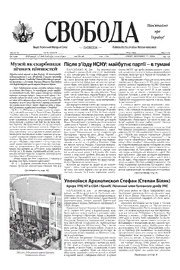
Svoboda-2006-46
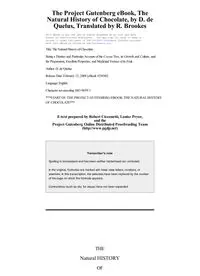
The Natural History of Chocolate by D de Quelus

Molecular Biology of G-Protein-Coupled Receptors
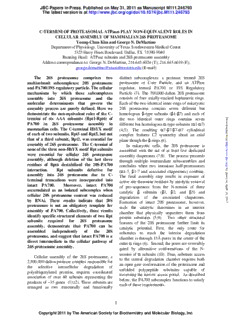
C-TERMINI OF PROTEASOMAL ATPases PLAY NON-EQUIVALENT ROLES IN CELLULAR ...

Glencoe Literature: Reading With Purpose, Course 3

Caderno Aprender

Caderneta de Saúde da Criança

Zandvoortse Courant 2006 week 01
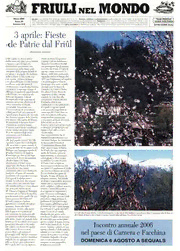
Friuli nel Mondo 618-03-2006

Elements of Physical Chemistry, 5th Edition
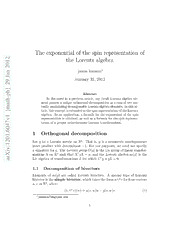
The exponential of the spin representation of the Lorentz algebra
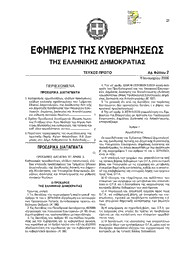
Greek Government Gazette: Part 1, 2006 no. 2

Chhattisgarh Gazette, 2006-01-13, No. 2, Pt. 3 (1)
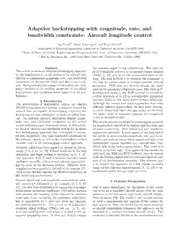
DTIC ADA442139: Adaptive Backstepping With Magnitude, Rate, and Bandwidth Constraints: Aircraft Longitude Control
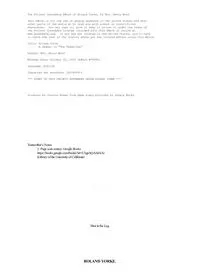
Roland Yorke

Asthma Emergency Dept. Visit Rates 65-plus Year Olds by Healthy Maine Partnership 2001-2005

